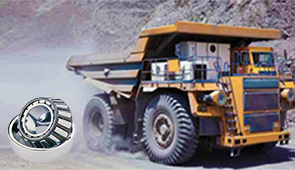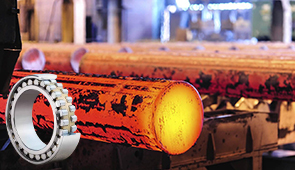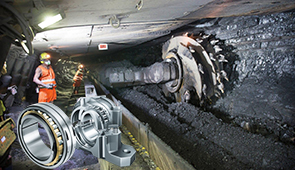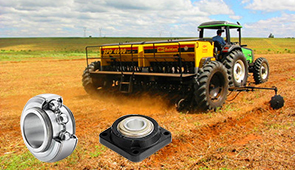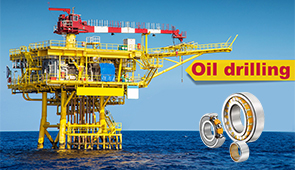Grease vs Oil: Unraveling the Difference Between These Essential Lubricants
Lubrication plays a critical role in reducing friction, minimizing wear, and ensuring the smooth operation of machinery and mechanical systems. Among the various types of lubricants, grease and oil stand out as the most commonly used, each serving distinct purposes and exhibiting unique properties. Understanding the differences between grease and oil is essential for selecting the correct lubricant for specific applications, thereby enhancing performance and extending the lifespan of equipment. This article will explore the fundamental characteristics, applications, advantages, and limitations of grease and oil, providing readers with a comprehensive insight into how these essential lubricants work within industrial, automotive, and everyday contexts. By the end, you’ll have a clear guideline to determine the most appropriate lubricant for varying operational demands.
What is the main difference between oil and grease?
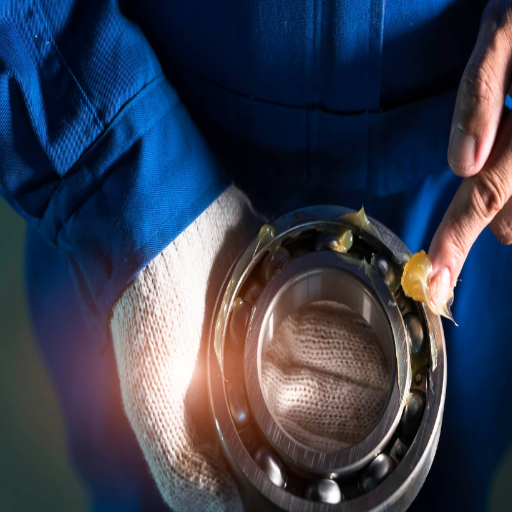
Composition and consistency: How oil and grease differ
While grease and oil can serve the same functions, it is important to understand how their composition and consistency differ because each is suited for specific scenarios. Grease is oil that has been thickened with a metallic soap like lithium, calcium, or even aluminum. lithium grease, which is commonly used as a thickening agent.
Oil, on the other hand, is a liquid lubricant made with a mineral, synthetic, or bio-based base oil combined with an array of additives for increased efficacy, such as detergents and viscosity modifiers. Suited oil additives are dependent on the operating temperature and pressure.
Though oil serves as a lubricant for fast-moving or high-temperature machinery, it is less advantageous for any intermittent usage when compared to grease, which’s tackier form allows it to hold its place. The physical structure of oil and grease as well as their composition affect their purpose in an engineering or mechanical system.
Understanding the role of thickeners in grease
Thickeners form an intricate part of the combination of components that make up grease since thickener provides the structure that locks and retains the base oil so that the grease can sustain a semi-solid state. Important types of thickeners include metallic soaps such as lithium, calcium, and aluminum soap, complex soap, and polyurea non-soap thickeners. Each type of thickener affects grease performance in a different way, which is defined by temperature tolerance, load-carrying ability, and the degree of water or chemical resistance.
- Temperature Stability: Lithium thickeners work well between -20 and 120, while complex soap thickeners might stretch this to 150 and beyond.
- Water Resistance: Calcium thickeners have better resistance to washout than lithium thickeners.
- Load Carrying Capacity: Polyurea thickeners offer high mechanical stability and promote the use of extreme pressure additives for high-load applications.
Thus, it can be seen that the choice of thickener is dependent on the environmental and mechanical requirements of the specific application which guarantees performance and reliability for the set engineering specifications.
Comparing viscosity: Oil fluidity vs grease consistency
While both oils and grease are employed in lubrication systems under different operating conditions, viscosity remains a highly decisive feature when differentiating oil fluidity from grease consistency.
- Viscous Oil: For oil, the most common units of measurement are centistokes (cSt), with standard reference temperatures set at 40 degrees and 100 degrees celsius (ASTM D445). For high-speed, high-performance applications, a low viscosity oil (20 cSt at 40 degrees) provides for easy flow along with heat dissipation while higher viscosity oils (320 cSt at 40 degrees) work best for low speed systems with heavy load.
- Grease Consistency: The viscosity of grease is considered to be indirectly defined, owing to its classification with the NLGI grade. Penetration tests (ASTM D217) are used to measure NLGI rank, with softer greases holding higher penetration values and harder greases holding lower penetration values for grouped rigidity.
In this way, the choice between oil and grease is dictated by operational workload, temperature, speed, and viscosity. Moreover, confirming these factors through standardized testing ensures precise lubrication tailored toward enhancing system reliability.
When should you use grease instead of oil?

Applications where grease excels over oil
Grease is frequently favored over oil in cases where lubrication requires leakage containment as well as the absence of frequent reapplication, for example. Grease is highly effective in the case of heavy machinery bearings or joints’ slow-moving components working under high loads because of its higher viscosity which gives better protection through its capability to maintain a film under extreme pressure.
- Viscosity: Grease usually has base oil of higher viscosity which ensures it stays in one position in case of slow speed or low revolutions per minute or heavily loaded operations.
- Temperature Performance: Grease is helpful for stable lubrication in the case where oil would tend to evaporate or break down in during high temperature performance.
- Contamination Resistance: Its thick consistency makes it possible for grease to seal against dirt and moisture, making it useful for outdoor or exposed machinery.
- Longevity: Compared to using oil, grease has a longer service life which reduces the frequency of maintenance required in hard to reach areas.
Such properties of grease justifies the use of grease instead of oil for applications needing long relubrication intervals, high levels of environmental contamination, or severe mechanical stress on components.
Benefits of grease in high-temperature environments
Due to grease’s ability to sustain its structure and lubrication traits at unreasonable thermal levels, it displays unmatched performance in high-temperature conditions. The primary advantages consist of:
- Thermal Stability: Certain formulations guarantee functionality up to 250 °C (482 °F) due to high-performance greases being manufactured with advanced thickener base oils such as polyurea and lithium complex.
- Oxidation Resistance: The addition of oxidative breakdown protective antioxidants extends the lifespan of grease, prolonging its use at elevated temperatures.
- Enhanced Adhesion: The semi-solid attributes of grease allows it to remain in place, thus consistently providing lubrication despite working temperatures and thermal cycling.
- Load-Carrying Capacity: Some high-temperature greases rely on extreme pressure (EP) additives which enable these grease types to sustain loads with reduced wear and viscosity breakdown at elevated thermal thresholds.
- Low Volatility: High-temperature greases with specialized base oils ensure sustainable lubrication while reducing the rate of evaporation, extending the time frame for exposure and lessening the need for replacement.
These factors outline how grease aids in preserving component efficiency and reducing maintenance in high thermal stress environments. For optimized performance in machinery, the selection of the proper high-temperature grease is imperative.
Using grease to prevent leakage in machinery
Shrinkage in leaks on machinery parts can be dealt with by the effective use of grease, which serves as a sealant that blocks contact area to leaking fluids. To ensure maximum benefit, it is necessary to choose grease with desirable operational characteristics for the working environment:
- Viscosity Index: A base oil viscosity grease should do the best to provide a stable leakage seal at high and low temperatures over a wide range of temperatures.
- Thickener Compatibility: The addition of certain grease thickeners like calcium sulfonate or lithium complex determines the grease’s ability to seal and adhere at high-pressure zones.
- Dropping Point: Greases recommended for high-temperature systems should have a higher dropping point beyond 392°F or 200°C, which prevents structural breakdown and leakage.
- Water Resistance: Grease should be chosen with good water resistance to ensure that it does not enable one of the leakage causes in wet environments.
- Mechanical Stability: High resistance to softening under mechanical stress is essential to sealing performance over time.
Assessing these factors on the basis of the machinery’s operating conditions permits the development of a lubrication plan that will provide maximum fluid containment and increased system life and efficiency.
Can oil and grease be used interchangeably?
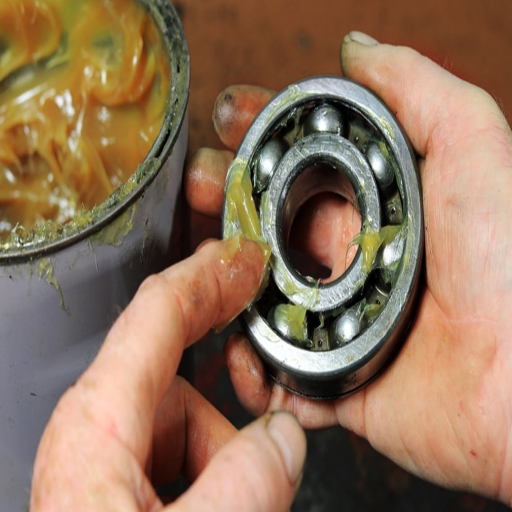
Identifying situations where oil is preferred
In any case, wherever there is need of very high speed rotation or less friction oil is the most preferred option. This is because under dynamic conditions the lower viscosity of oils as compared to grease enables better heat dissipation and lowering of torque. For instance, with the case of gearboxes and hydraulic systems, oils ensure that all moving parts are continuously lubricated which reduces friction and wear.
- Viscosity Index: Another aspext is that oils with higher viscosity index are more useful in hydraulic mechanisms because they are more uniform with regards to high temperatures.
- Thermal Conductivity: Oils, as previously discussed, are better than greases because they can easily dissipate heat.
- Flow Behavior: Oils allow reasonable provision of lubrication as compared to greases in machined parts having tight tolerances.
- Contaminant Removal: There is flexible powering of the oil, which allows circulation, thus making it fit for an environment having contaminants that require to be removed constantly from the lubrication channel.
These view points allow me to technically reason whether the oil is the most fitting lubricant for a given application and thereby enhance the performance and life span of the machinery.
Understanding the limitations of substituting grease for oil
- Temperature Control: Grease cannot dissipate heat as effectively as oil. In cases where component temperatures are greater than 250°F (121°C), oil is often needed to effectively handle thermal loads. Insufficient cooling can result in increased wear or even part failure.
- Lubrication Flow: Grease does not have the ability to be rotated dynamically as with oil. It can only remain bound to a surface. This physical attribute limits lubrication in sophisticated or fast systems—like rolling-element bearings that spin faster than 3000 RPM—to certain high-speed bearings that need to be lubricated.
- Contaminant Management: Grease can’t be filtered while in use; therefore, it is a closed system lubricant. Filters make it less desirable for environments laden with dirt, debris, or process contaminants because their constant accumulation could damage system integrity.
- High-Pressure Performance: Grease displays excellent load carrying capacities thanks to its consistency. Still, high speeds coupled with high pressures—like hydrodynamic lubrication—make it impossible to use grease due to the created gap being too thin to sustain a lubrication film.
That grease can accomplish some tasks; however, it has limitations resulting from the machine’s operating requirements that need to be evaluated. Therefore, I can pick the most appropriate lubrication medium with guarantee for both efficiency and system life.
The impact of using the wrong lubricant type
Applying an improper type of lubricant may cause great loss in productivity and mechanical breakdown. For instance, if a lubricant is not thick enough, it may not sustain the desired film level, which would lead to metal scraping against metal and wear and tear of machinery. On the other hand, if the lubricant is too thick, then it will cause friction and loss of energy. Likewise, using lubricants that do not have the appropriate thermal stability will enable them to undergo destruction because of high temperatures, causing obstruction to and damaging the system.
- Viscosity: Sufficient viscosity is required for a lubricant to ensure suitable film thickness for a certain load and speed.
- Thermal Stability: A lubricant’s working temperature range should be reasonably safe from degradation for it to remain effective.
- Load-bearing Capacity: The lubricant must be able to withstand extensive use and not be adversely affected in wear-intensive applications.
- Compatibility: No chemical reaction should take place between sabotaging elements such as seals and metals with the lubricant in the machinery.
- Contaminant Resistance: Lubrication must attempt to limit the entry of contaminants that instigate abrasive eroding or corrosion if these lubricants are to work effectively.
I would scrutinize the actual working conditions of the equipment, cross-check them with the manufacturer’s requirements, and choose a lubricant that meets these crucial constraints. This guarantees optimal performance, reduces downtime, and enhances the life of the machine.
How do oil and grease differ in their lubricating properties?
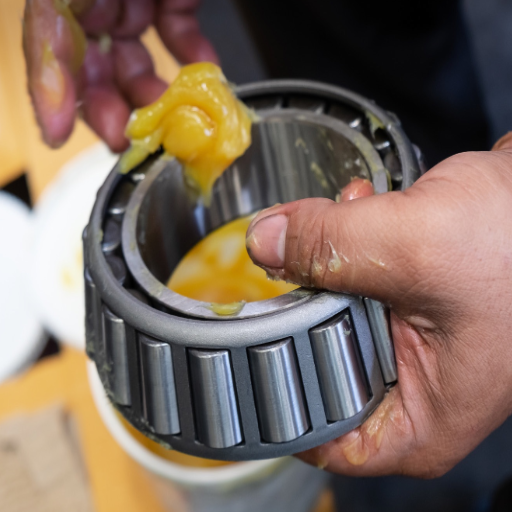
Comparing the lubricating mechanisms of oil and grease
Oil and grease differ mainly in the methods of their respective applications and the state in which they exist. To my knowledge, oil serves capably as a liquid lubricant since it covers and dissipates heat quickly in dynamic systems like engines or high-speed bearings. Oils are defined by their viscosity, which is the resistance of a fluid to shear thinning and is measured in centistokes (a measure of volume per time). That, in turn, affects film strength and their flow properties, which ensures compliance with operational requirements as stipulated in ISO viscosity grades.
Grease, on the other hand, is a semi-solid lubricant produced by blending a thickening agent such as lithium or calcium soap base oil and sometimes other additives for a desired specific purpose. As it is subjected to mechanical stress, the released oil provides lubrication most of the time, while the grease stays in place to provide long-time protection in components with low relubrication frequency or where sealing against contaminants is crucial. Widely used parameters for grease include penetration grade (which defines the consistency of grease and is measured in tenths of millimeters) or drop point, which is the temperature of thermal stability under high temperatures.
By evaluating these factors, I can determine the best lubricant for a specific application when combined with other factors such as operating temperature, load, and exposure to the surrounding environment. This guarantees proper lubrication while still achieving the desired reliability and efficiency of the system.
The role of additives in enhancing lubrication performance
The characteristics of oil and grease can be enhanced with the use of certain additives. These changes improve anti-oxidation, anti-wear, and load-drawing functions. For instance:
- Anti-wear (AW) agents: Zinc dialkyldithiophosphate (ZDDP) is known to create protective films on metal surfaces, preventing direct contact of metal parts during high loads. This compound is usually 0.5%-1.5% of oil concentration.
- Extreme Pressure (EP) additives: Additives such as sulfur-phosphorus or molybdenum disulfide form chemically reactive shields under high pressure and temperature. They stretch under heavy operating conditions and are called protective shields. EP-rated greases frequently comply with NLGI GC-LB.
- Oxidation Inhibitors: Hindered phenols are well known for preventing oil degradation via oxygen exposure. This directly prolongs lubricant life. Oxidation stability can be measured by ASTM D943 (RBOT Test).
- Viscosity index (VI) improvers: Polymers that are incorporated into the oil tend to resist the breakdown of viscosity. This is ideal for uses where change of temperature is unstable (multigrade oils are required for VI > 150).
- Detergents and Dispersants: A balance below 7 mg KOH/g determines effective detergent capacity. They can be used in engines where the dirt and deposit build-up is at a maximum.
- Thickeners in grease: Grease thickeners include lithium complex, polyurea, and calcium sulfonate systems, which improve grease’s mechanical performance consistency and adherence in alignment with NLGI grades.
The use of specific additives designed for particular operational limits such as temperature, load, and velocity, not only guarantees lubrication performance but also improves the dependability and durability of the machines.
How do oil and grease compare in terms of longevity and maintenance?

Factors affecting the lifespan of oil vs grease
The effectiveness and maintenance of oil and grease are subject to several interrelated factors; hence, their lifespan is subject to change as follows:
- Operating Temperature: Elevated temperature cause oil to oxidate and grease to breakdown, reducing their lifespan. For example, oils with higher viscosity indexes and synthetic formulations and greases with thermally stable thickeners such as lithium-complex can withstand higher temperatures more effectively.
- Contamination: Exposure to water, dirt, or even chemical contaminants decreases the longevity of both oil and grease. With proper sealing mechanisms and periodic filtration systems, these effects can be mitigated, although this is not the case with grease. Because grease has a thicker consistency, it tends to perform better in more contaminated environments.
- Base Oil and Additive Composition: Durability and the causal relation to the chemical formulation, including antioxidant and antiwear agents is evident. For example, oils with higher amounts of zinc dialkyldithiophosphate (ZDDP) or borate-based additives are less susceptible to oxidative degradation and wear in comparison with other oils.
- Load and Pressure Conditions: Extreme pressure or very high loads can shear oil films or make grease too thin to provide lubrication which causes a reduction in performance. In these cases, extreme pressure (EP) additives like molybdenum disulfide in grease or PAO based (polyalphaolefin) oils help a lot.
- Reapplication Frequency: Various oils need to be substituted or renewed more regularly, especially during high-speed or high-drain activities. Grease, in contrast, has slower functioning migration, hence lasting longer, but requires scheduled re-greasing to sustain performance.
- Method of Application: Oil can be continuously circulated (through splash or pressurized systems) and grease can be applied through a centralized system. This enables the lubricant to be refreshed periodically which increases lifecycle duration and helps in maintenance planning.
For these operating conditions, the right lubricant can be chosen along with maintenance planning that ensures the system’s efficiency and longevity.
The impact of environmental factors on lubricant performance
Lack of control over environmental conditions poses a major challenge for the lubrication’s efficiency, as temperature, humidity, contamination, and operational conditions govern the chemical and physical properties of the lubricant, and its interaction with many mechanical surfaces. Any alteration to such components would impact lubricant efficiency.
- Temperature: The lubricant should operate within an acceptable range of temperatures. Excessively high temperatures can lead to thermal degradation, oxidation, and lack of viscosity, while extremely cold temperatures may increase viscosity and cause the lubricant to freeze. The Viscosity index (VI) is a critical convention in this regard. For example, synthetic lubricants often exhibit a VI > 150, ensuring stability in extreme conditions. A measurement of 150 guarantees better performance of lubricant about temperature change.
- Humidity: The lubricant must be simple to handle. Exposure to high humidity or water ingress can lead to emulsion formation corrosion of surfaces and lubricity. High separation of water demulsibility lubricants is essential in humid environments.
- Contamination: A lubricant’s efficiency is plagued over time with the introduction of particulate contamination (dirt, wear debris, chemicals, and pollutants). A standard measure implying IS0 4406 proposes cleanliness levels, whereby, lower particulate code indicates a better degree of cleanliness, thus better protective features of the lubricant.
- Operational Load and Speed: The lubricant’s film thickness and friction-reduction capability suffers with respect to heavy operational loads and increased speed. Factors like the elastohydrodynamic (EHD) film thickness specification and the load-carrying capacity (obtained via ASTM D2782 for wear resistance) measures guarantee sufficient lubrication during intense mechanical overloads.
- Oxidation Stability: Sludge and acid are more likely to form in the presence of higher temperatures due to accelerated oxidation. The oxidative stability of a lubricant can be evaluated with instruments that measure the breakdown in service; for example, the lubricant’s oxidative resistance during extended service is evaluated by instruments such as ASTM D943.
With these considerations in mind, appropriate technical lubricants are selected that operationally enable reliability and equipment durability even under tough environmental conditions.
Frequently Asked Questions (FAQs)
Q: What’s the difference between grease and oil as lubricants?
A: Grease and oil are both essential lubricants, but they have distinct properties. Oil is a liquid lubricant that flows freely, while grease is a semi-solid lubricant that consists of oil mixed with thickeners. Grease acts like a sponge, holding the oil in place and releasing it slowly over time. This makes grease ideal for applications where oil might drip or run off, while oil is better suited for applications requiring continuous lubrication and heat transfer.
Q: When should I use oil or grease for lubricating a bearing?
A: The choice between oil and grease for lubricating a bearing depends on various factors. Use oil when you need better cooling properties, at higher speeds, or when the bearing operates in a sump system. Grease is preferred for bearings that require less frequent lubrication, operate in dirty environments, or need protection against moisture. Grease is also ideal for vertical shafts where oil might drain away. Consider factors like speed, temperature, and operating conditions when deciding between oil or grease for your bearing.
Q: Can cooking oil be used as a lubricant?
A: While cooking oils like vegetable oil can provide some lubrication, they are not recommended for most mechanical applications. Cooking oils lack the necessary additives and properties of specialized lubricants and greases. They can break down quickly, become rancid, and may not provide adequate protection against wear and corrosion. However, in emergencies or for temporary, light-duty applications (e.g., lubricating a squeaky hinge), cooking oil might be used as a short-term solution until a proper lubricant can be applied.
Q: Can grease be used in hydraulic systems?
A: Generally, grease is not suitable for hydraulic systems. Hydraulic systems require a fluid that can flow freely through small orifices and valves, transfer power, and dissipate heat effectively. Oil is the preferred lubricant for hydraulic systems due to its liquid nature and ability to transfer heat. Grease, being semi-solid, would clog the system and prevent proper operation. However, some components of hydraulic systems, such as pivot points or bearings, may use grease for lubrication, but not within the hydraulic circuit itself.
Q: What are food-grade lubricants, and when should they be used?
A: Food-grade lubricants are specially formulated oils and greases that are safe for incidental food contact. They are used in food processing, packaging, and handling equipment where there’s a possibility of the lubricant coming into contact with food products. Food-grade lubricants are classified by the NSF (National Sanitation Foundation) into different categories based on their potential for food contact. These lubricants should be used in any application where food safety is a concern, such as in food manufacturing plants, beverage bottling facilities, or commercial kitchens. It’s crucial to use food-grade lubricants in these settings to ensure compliance with food safety regulations and protect consumer health.
Q: Is it safe to use grease or oil in a garbage disposal?
A: It is not recommended to use grease or oil in a garbage disposal. While the disposal’s moving parts do require lubrication, this is typically provided by the water used during normal operation. Pouring grease or oil down the garbage disposal can lead to clogs in your plumbing system as the fats cool and solidify. Additionally, grease and oil can build up on the disposal’s components, reducing its efficiency and potentially causing damage. If your garbage disposal needs lubrication, it’s best to consult the manufacturer’s instructions or a professional plumber for appropriate maintenance procedures.
UCTH213-40J-300 with Setscrew(inch)
CNSORDERNO: Normal-duty(2)
TOGN: UCTH213-40J-300
SDI: B-R1/8
SD: 2 1/2
UCTH212-39J-300 with Setscrew(inch)
CNSORDERNO: Normal-duty(2)
TOGN: UCTH212-39J-300
SDI: B-R1/8
SD: 2 7/16
UCTH212-38J-300 with Setscrew(inch)
CNSORDERNO: Normal-duty(2)
TOGN: UCTH212-38J-300
SDI: B-R1/8
SD: 2 3/8
UCTH212-36J-300 with Setscrew(inch)
CNSORDERNO: Normal-duty(2)
TOGN: UCTH212-36J-300
SDI: B-R1/8
SD: 2 1/4
UCTH211-35J-300 with Setscrew(inch)
CNSORDERNO: Normal-duty(2)
TOGN: UCTH211-35J-300
SDI: B-R1/8
SD: 2 3/16
UCTH211-34J-300 with Setscrew(inch)
CNSORDERNO: Normal-duty(2)
TOGN: UCTH211-34J-300
SDI: B-R1/8
SD: 2 1/8









